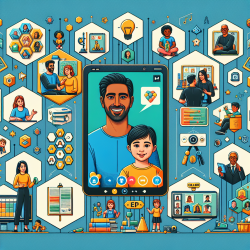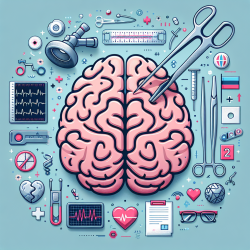Revolutionizing Remote Therapy with Augmented Reality and Haptics
In the ever-evolving landscape of telemedicine, the integration of augmented reality (AR) and haptic technology is setting new benchmarks. The recent study on the Usability of an Immersive Augmented Reality Based Telerehabilitation System with Haptics (ARTESH) presents groundbreaking findings that could redefine remote musculoskeletal examinations.
Understanding the ARTESH System
The ARTESH system is an innovative telerehabilitation platform that combines AR with haptic feedback to enable synchronous remote physical examinations. This system allows practitioners to conduct detailed musculoskeletal evaluations by integrating the sense of touch with visual and auditory data, overcoming the traditional limitations of telemedicine.
Key Features of ARTESH
- Force Enhancement Algorithm: Improves force rendering, addressing the "just-noticeable-difference" limitation.
- Force Compensation Method: Reduces delay in force rendering, ensuring real-time interaction.
- Haptic Interface Point: Minimizes disparity between visual and haptic data.
- Efficient Data Processing: Utilizes advanced algorithms for processing, compressing, and rendering 3D tele-immersion data.
Study Findings and Practitioner Insights
A qualitative pilot study involving 20 participants evaluated the system's usability. The results were promising, with high ratings for ease of use (86%) and quality of experience (85%). However, the comparison to in-person evaluations scored lower (58%), indicating areas for improvement.
Practitioners can leverage these insights to enhance their remote therapy sessions by adopting AR and haptic technologies. The system's ability to convey audio-visual and tactile data in real-time could significantly improve patient outcomes and satisfaction.
Future Directions and Opportunities for Practitioners
While the ARTESH system shows immense potential, further research and development are essential. Practitioners are encouraged to explore this technology's capabilities and contribute to its evolution. Potential areas for future study include:
- Enhancing the range of motion for haptic devices to cover all joint movements.
- Developing solutions for patients with gripping difficulties.
- Improving visual fidelity to minimize artifacts and enhance tele-immersion.
By staying informed and engaged with the latest advancements, practitioners can play a pivotal role in shaping the future of remote therapy.
Conclusion
The ARTESH system represents a significant step forward in remote therapy, offering a comprehensive solution for conducting musculoskeletal examinations from a distance. Its successful implementation could transform the landscape of telerehabilitation, making it more accessible and effective for patients worldwide.
To read the original research paper, please follow this link: Usability of an Immersive Augmented Reality Based Telerehabilitation System with Haptics (ARTESH) for Synchronous Remote Musculoskeletal Examination.










